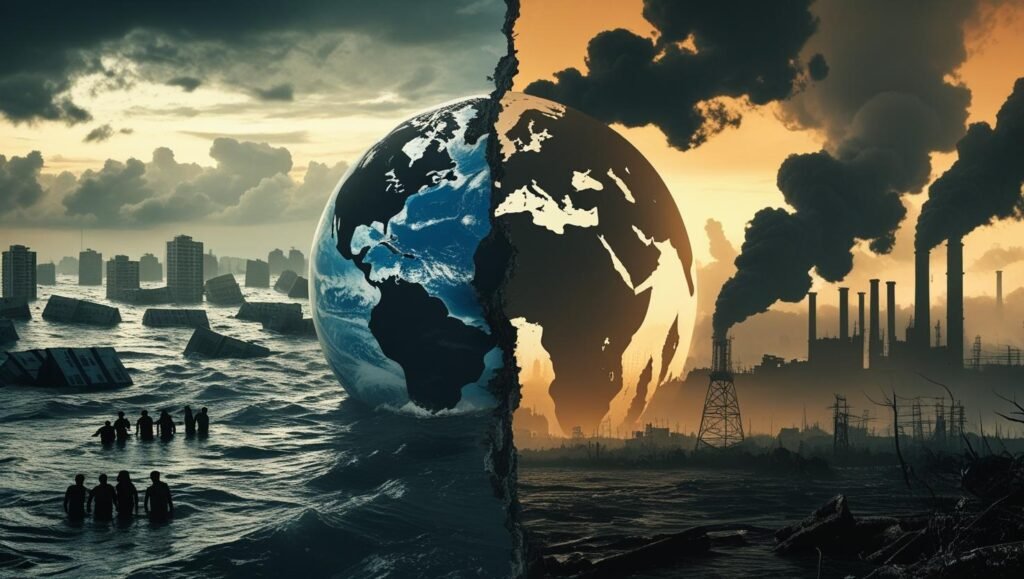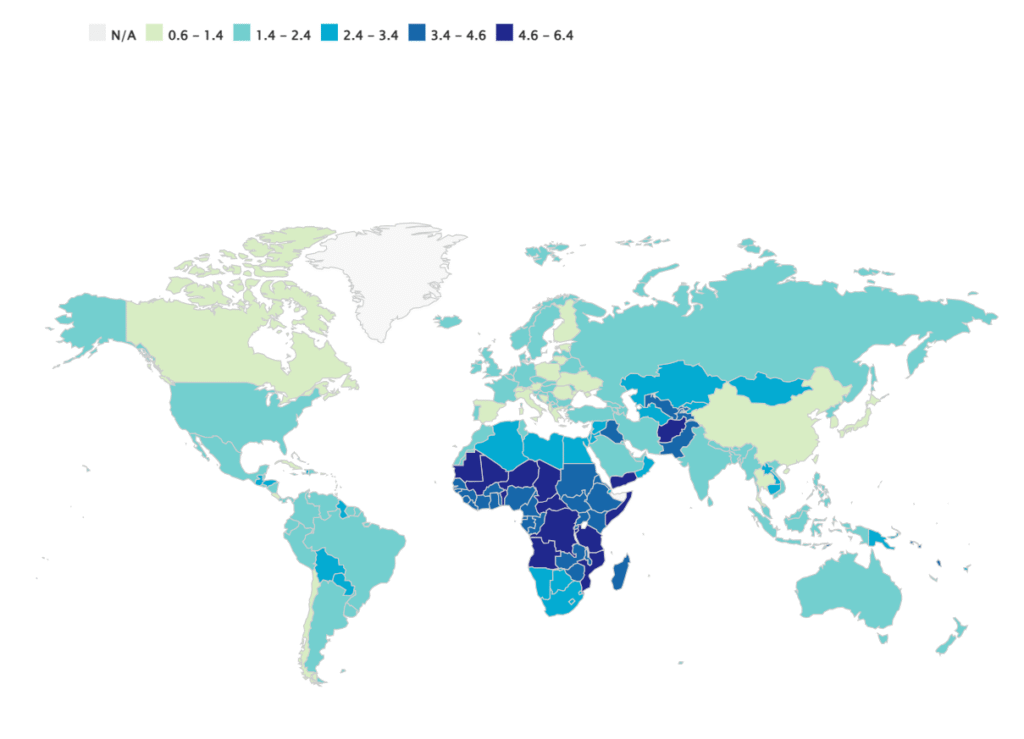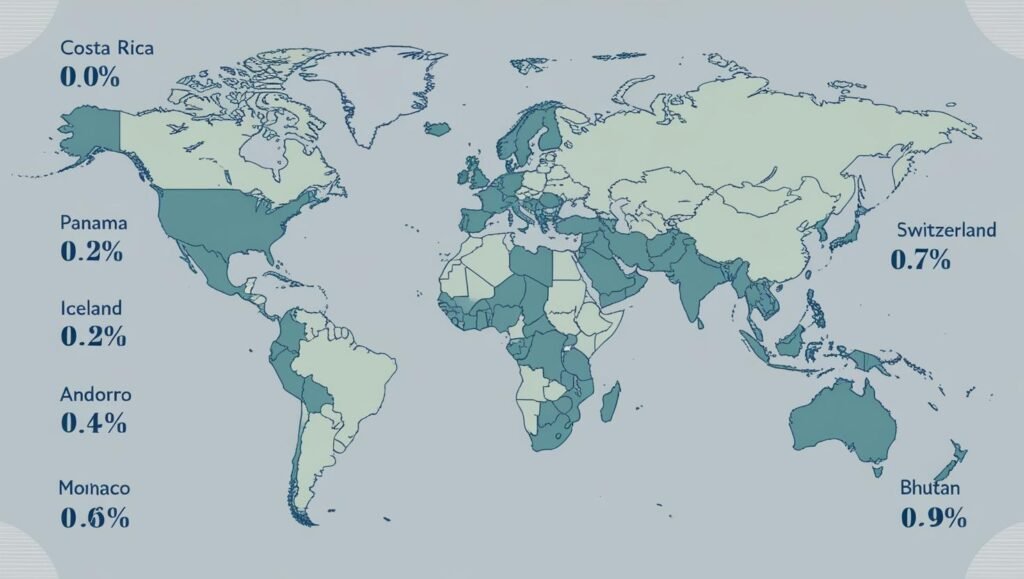The global flood crisis is no longer a future problem—it’s happening now.
🌊 Introduction: A Global Wake-Up Call
The global flood crisis is escalating rapidly, transforming once-rare events into frequent and deadly disasters. From the hills of Himachal to the coastlines of South Africa, and from China’s sunken towns to the streets of New York, floods are striking harder and more frequently than ever before. What once were seasonal or rare events have now turned into deadly and devastating occurrences across the globe.
The global flood crisis is unfolding in real time—and yet, the world seems unprepared for its rising tides.
📈 The Numbers Behind the Global Flood Crisis
Recent decades have seen a staggering increase in flood-related disasters:
- 🌧️ Flood events have more than doubled since the 1990s—from ~86 per year to over 170 in 2023.
- 🌍 4,700+ flood disasters between 1990 and 2022 affected over 3.2 billion people.
- 💰 Economic damages have surged 7x since the 1970s, now costing hundreds of billions annually.
- 📊 1.8 billion people currently live in flood-prone zones—24% more than in 2000.
- 🧊 Climate models show coastal flooding will double in frequency by 2050.
These aren’t just numbers. They’re stories of lives lost, homes destroyed, and entire regions pushed into crisis.
🔍 Causes of the Global Flood Crisis
Floods are a natural phenomenon—but their frequency, intensity, and impact are now largely human-made. Here’s what’s driving the surge:
🏗️ 1. Unplanned Urbanisation
Poorly planned cities built without proper drainage or flood zoning turn heavy rain into chaos. Concrete jungles with no green spaces can’t absorb water—leading to flash floods.
🌄 2. Reckless Mountain Development
Hill regions are being carved for roads, hotels, and homes, disturbing natural slopes and increasing landslide and flood risks.
🌳 3. Deforestation
Trees act as natural barriers that absorb water and hold soil. Their removal accelerates runoff, erosion, and flash floods.
🚧 4. Dam Construction Disrupting Rivers
Overbuilding of large dams disturbs natural river flow, sedimentation, and flood patterns downstream.
🛍️ 5. Plastic Pollution
Plastic waste clogs drainage systems, rivers, and floodplains—exacerbating urban waterlogging and disaster.
🚗 6. Fuel-Based Transport
Fossil-fuel emissions are warming the planet, increasing the moisture in the atmosphere, which in turn leads to more intense and erratic rainfall.
🏞️ 7. Wetland Destruction
Natural buffers like wetlands and mangroves that absorb excess water are being destroyed for real estate and farming.
🌐 The Global Spread of the Flood Crisis
📍 Recent Global Flood Events (May–June 2025):
| Region | Event & Impact Highlights |
|---|---|
| SW China | Meilin submerged, 6+ deaths, landslide risk increasing |
| India | Himalayan floods, flash events, landslides |
| Pakistan | Nationwide monsoon flood alerts, deaths reported |
| South Africa | Devastating June floods, ~100 dead |
| Nigeria | Multi-state floods, 238+ deaths, massive displacement |
| Bolivia | March–ongoing floods, national emergency |
| Australia | NSW flood, major evacuations, rare 1-in-500 year event |
| US | Localized flash floods in WV & NY, several deaths |
Flooding is now hitting every continent. Whether it’s monsoon fury in Asia, hurricanes in the Americas, or infrastructure collapse in Africa—this is a global flood crisis with no boundaries.
What’s Causing the Sharp Rise in Floods?
The Global Flood Crisis is largely driven by human activities. Here’s a refined breakdown of the key causes:
| Cause | Relevant? | Explanation |
|---|---|---|
| 🏗️ Mountain Development | ✅ Highly Relevant | Construction in hilly areas disturbs natural slopes and vegetation, leading to reduced water absorption and increased landslide risk. |
| 🏙️ Unplanned Urbanisation | ✅ Critical | Cities built without proper drainage, green spaces, or zoning regulations are far more prone to intense flooding during heavy rains. |
| 🛍️ Plastic Pollution | ✅ Very Relevant | Non-biodegradable waste clogs drains and rivers, worsening urban floods. Burning plastics also contributes to air and climate pollution. |
| 🏞️ River Flow Disruption by Dams | ✅ Strong Contributor | Oversized dams alter the natural flow of rivers, increasing flood risks downstream by interfering with sediment and water patterns. |
| 🚗 Fossil Fuel Vehicles | ✅ Indirect Impact | Emissions from fuel-based transport contribute to global warming, which leads to heavier and more erratic rainfall. |
| 🌳 Deforestation | ✅ Directly Linked | Cutting down trees reduces the land’s ability to absorb rainwater, increasing surface runoff, erosion, and flash floods. |
🌡️ Additional Factors Intensifying the Global Flood Crisis
| Additional Cause | Impact |
|---|---|
| 🔥 Global Warming | Warmer atmosphere holds more moisture, resulting in heavier and more frequent downpours. |
| 🌊 Rising Sea Levels | Coastal cities experience frequent tidal and storm surge flooding, even without direct rainfall. |
| 📉 Poor Governance | Weak policies, lack of enforcement, and corruption in infrastructure planning leave cities vulnerable. |
| 🏗️ Wetland Encroachment | Wetlands naturally absorb excess water. Replacing them with concrete increases flooding risks. |
| 💸 Short-Sighted Development | Many projects prioritize profits over resilience, with no planning for drainage, sustainability, or long-term safety. |
🔮 Future Threats of the Global Flood Crisis
If current trends continue, the future could look like this:
- 📉 Frequent city shutdowns due to inundation
- 🌾 Crop losses leading to food shortages and inflation
- 🏚️ Climate migration displacing millions
- 🦠 Waterborne disease outbreaks in flood-prone areas
- 💸 Escalating costs of disaster response and recovery
- 🛑 Reversal of decades of development in low-income nations
The global flood crisis will affect rich and poor alike—but the poorest will suffer first and worst.
🧭 What Must Be Done (Before It’s Too Late)
To curb this crisis, we need a unified global response rooted in science, sustainability, and strong governance:
- ✅ Eco-sensitive development—especially in hills and coasts.
- 🌳 Forest and wetland protection as critical flood buffers.
- 🚫 Ban on encroachment of floodplains and illegal construction.
- 🚍 Shift to clean transport to reduce climate-induced storms.
- 💡 Disaster-resilient infrastructure built with long-term planning.
- 📡 Early warning systems and evacuation protocols for vulnerable areas.
- 🌐 Global cooperation—because floods know no borders.
🔚 Closing Thoughts: A Global Appeal
“The rain may fall from the sky, but floods are man-made disasters. We cannot afford to keep building cities that collapse in the rain, or economies that crumble with every storm. The global flood crisis is not a future problem—it’s here. Governments must rise above politics and work together before it’s too late. Because if we don’t change course now, nature will do it for us—and not gently.”
Sources: WMO, UNDRR, IFRC, World Bank & GFDRR, Statista, IPCC (Intergovernmental Panel on Climate Change), IOPscience Environmental Research Letters, IMD (India Meteorological Department) & NDMA (India’s National Disaster Management Authority), NOAA (National Oceanic and Atmospheric Administration – USA), South African Government Disaster Reports
Looking for more articles? Visit our Homepage for the latest news, insights, and updates across sports, culture, and more.




